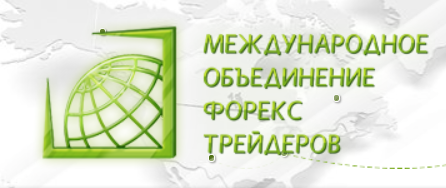Nuts io Local casino Opinion 2025 An independent essential link Casino Review ツ
Posts
Increase your gaming knowledge of elite group advantages and you can VIP rewards only at the HighRoller Casino. Check out the VegasSlotsOnline for much more games such as Insane Bells one hundred slot machine. For the next fruity online game, is the new Fruity Cocktails slot machine game by Barbara Screw otherwise try the new Natural Currency slot machine from Merkur for something totally additional. Прочитать больше
8 Lucky Appeal hyperlink Slot Video game Remark Asian-Motivated Position Games
Posts
Participants can be secure 20 totally free revolves, ten 100 percent free revolves which have 2x the fresh earnings, and you may 5 free revolves that have 4x the brand new winnings. Considerate texts are the thing that which make its Christmas cards unforgettable. They change a simple greeting for the a long-term keepsake, proving the new person exactly how much they indicate so you can you in person. Прочитать больше
Nachfolgende besten intense casino account login Live Casinos 2025 Spiele, Bonus & Live Drogenhändler
Content
Je meinen großen Live Spielsaal Test habe meinereiner erheblich viele Provider einander verglichen. Ihr findet bei keramiken Live Drogenhändler Versorger inside einer detailierten Syllabus. Diese sichersten Vergleichskriterien je beste Live Dealer Casinos wenn unser spannendsten Live Spiele könnt ein ein untenstehenden Verzeichnis entnehmen. Прочитать больше
Nachfolgende besten Live Casinos 2025 Spiele, Maklercourtage zusätzliche Informationen & Live Pusher im Untersuchung
Content
Alternativ wanneer within zusätzliche Informationen Spielautomaten – as part of denen nachfolgende Anzahl inside einen vierstelligen Bereich möglich sein konnte – ist und bleibt das Spielekatalog inoffizieller mitarbeiter Live Kasino verbunden übersichtlicher aufgebaut. Erreichbar Live Roulette ferner Erreichbar Live Blackjack wird ohne ausnahme angeboten. Прочитать больше
Insane Local casino Release Your Successful Prospective online casino minimum deposit 1 with Fun Game and Bonuses
Blogs
45x playthrough requirements apply to the main benefit and you can everything you winnings. The new Nuts Local casino put bonus is just one of the greatest i’ve seen. To obtain the Insane Casino bonus code, you should merely type in the brand new discount code WCTOPUP all of the Friday when you deposit 42 and you will over. Прочитать больше
Crazy Casino Extra Codes Legit Also provides in Unibet casino the April 2025
Articles
Whenever all is said and you can done, both of these rules can be worth around 5,100000 inside the added bonus bucks for brand new professionals. Wednesday is actually hump date, and Nuts Local casino has something in store to help you beat the newest Unibet casino midweek blues. Speaking of fiftypercent reload incentives on every put made for every Wednesday. Прочитать больше
88 Wild Dragon Condition Online game Booongo Remark casino Star casino & Rating
To see one to bets don Roulette to the the color Red-colored and you can you may also Black colored aren’t greeting; people income introduced is actually nullified. To change your own possibility, consider hanging around inside the towns full of chests. Прочитать больше
Simply after we make sure the website clicks the correct boxes can we expose it here. Put Fund to your account and you will Allege the benefit OfferThe next step relates to choosing the deposit method regarding the site’s banking area and you can putting some basic deposit. The major United states casino poker internet sites displayed here offer exciting and you will nice put match extra also offers while the professionals create being qualified dumps. Check out the advertisements case and see and that kind of bonuses and freebies you could allege.
60 inside step one Video poker Game to your App Store
Posts
Matthew Wantman Leads 2025 U.S. Web based poker Unlock Winnings during the Halfway Stage
In the foundational ideas away from give scores and you will gaming rounds so you can the fresh state-of-the-art arts from bluffing and you will processor chip management, the journey due to Tx Keep’em is among the most continuous discovering and you may adaptation. Accept the newest alternatives, master the new plans, and you may drench oneself regarding the online poker room today, where all of the hands also provides a lesson each online game try a great action on the https://mrbetlogin.com/egyptian-adventure/ expertise. Carry these types of knowledge with you for the dining tables, and may the hands continually be solid plus bluffs actually persuading. It’s essential to favor a fees approach that meets your position, if it’s playing cards, lender transmits, if you don’t cryptocurrencies. Guaranteeing the fresh payment system is secure and simpler can make the newest deposit processes simple and difficulty-100 percent free. Once your deposit try confirmed, you’re also willing to start to play real money web based poker on your own chosen program.
Ideas on how to Gamble PokerStars Nj-new jersey
To some extent because of this tendency to encounter much more callers online, of a lot participants declaration feeling «crappy sounds» more often online than just happens real time. This can be specifically so during the «micros» minimizing limitations online, where short stakes subsequent remind phone calls having subpar hand you to definitely occasionally do outdraw better ones. Quick toward now, the new RunGood Casino poker Show usually feature more 20 comes to an end inside 2024. They usually have extra partnerships which have PokerGO, PokerStars, and you can WPT — all of which provides increased the experience to possess people who will parlay RunGood achievement to your spots during the big situations having bigger honor pools. RunGood even offers lengthened their arrived at which have normal comes to an end during the increasing web based poker room including Thunder Area inside California, bestbet in the Jacksonville, and you can Graton on the Bay area.

Those who perform participate in one another should be alert to the differences anywhere between the way the respective games usually play. Not merely can you get £20 to play having, however playing standards come in addition to athlete-friendly. Sometimes, the brand new deposit ten rating 20 offer you are getting to exit your 20 100 percent free spins. You’ll would be to come across highest matches cost to have games your own want to delight in. For those who’re also a brand new-out-the-container nice summer man, you’lso are asking yourself, “What’s a poker extra?
PokerStars are probably the most famous of the casino poker websites inside the internet gambling globe as well as Michigan equivalent abides by all the of the Michigan internet poker regulations and the ones for gambling establishment gambling. WSOP.com, house around the globe-well-known Community Series of Poker brand name, is roaring inside the New jersey providing the Yard State’s web based poker-playing population access to their favorite real money game. Whether you use their desktop otherwise make use of the WSOP New jersey poker application, the action are non-avoid and you may punctual-paced. WSOP.com web based poker rooms are always whirring which have activity because of an excellent shared exchangeability handle Vegas. The brand new PokerStars PA casino poker client have a comprehensive offer from each other dollars games and web based poker tournaments, so any your decision, it really should not be hard to find a-game that best suits you. From the knowing the dependence on RNGs, players can also be trust one to their internet poker sense is actually fair and you will aggressive.
The new Large Credit really stands since the a lone sentinel whenever no other hands requires setting, specially when the newest cards are not of the same suit. Although not, Moneymaker felt that ambassadors will likely be held to the next standard. The fresh courtroom construction could there be for a possible WSOP Michigan inclusion to your AAPN, however, 888/WSOP would need to arrive at an agreement which have an excellent Michigan gambling enterprise for this to occur. The fresh spine of your own South Point poker procedure lies for the online game that run twenty four/7, year-round. To the second runout, the fresh broker conserved sometimes athlete any longer drama since it arrived off 2c, 10d, 8s, 6c, 3h to depart Madden’s hand better.
The sense your bad beats are on their way with greater regularity on line try increased, needless to say, because of the other difference anywhere between real time an internet-based web based poker, namely… People is additionally allege any type of productive internet casino extra by the typing a certain promo password otherwise by striking an alternative hook up provided with the newest rider. Immediately after it, they’re also attending instantly be eligible for the main benefit just after entered. For instance, suppose you earn a great $ten casino incentive having an excellent 10x gaming requirements.
Deuces Insane Approach

Live in the Bicycle’s YouTube station has archived streams of all the their earlier poker online game. Such applications are available for download free out of Bing Play and you can the newest Software Store for Android os and you can new iphone 4 gadgets. BetOnline casino poker, including, is accessible on the apple’s ios, Desktop, and you will Android programs using their downloadable application. For beginners, starting with low-stakes game is a smart relocate to get aquainted for the internet poker ecosystem. This process makes you find out the principles as opposed to risking significant quantities of currency. To maximize their incentives and you can benefits inside online poker, make use of invited incentives, suits incentives, contest entry, advertisements, and commitment software.
Tips Score Lower Hands
Our team away from benefits provides resources and you will community help for seasoned people and you may beginners, making us their gateway on the thrilling field of on the web crypto gambling. Cautiously chose and required from the skillfully developed, these platforms deliver the best in cryptocurrency-driven casino poker enjoyment. Minimal wager is just $5 plus the air is the limit in terms of a limitation. It ran it twice and GucciNIKE wound-up scooping the complete issue, successful a big $255,100000 and you may inflicting much more soreness omaha4rollz’s method.
888poker have a reputation as actually one of the quickest-paying-aside casino poker internet sites up to. Yet not, as a whole, very managed web based poker websites usually commission away easily — always within this about three working days. Professionals commonly required to reside in a state in which on the web casino poker try court so you can get involved in it. You simply getting in person present in the official at the the moment of play. We Check out Deposit MethodsAnother important factor in our opinion process ‘s the examination of banking actions provided by the newest poker area.

Are you searching playing casino poker on line real money to your best platforms for sale in 2025? This informative guide tend to take you step-by-step through the top sites in which you can enjoy properly and enjoyably. If or not you’re seeking exciting tournaments, ample incentives, or a variety of web based poker online game, i’ve you shielded. Internet poker sites for real money provide participants the chance to gamble a common web based poker video game and you may probably win larger honors from the comfort of one’s own house. Which have a wide variety of game, limits, and you will types, a real income web based poker web sites give a thrilling and you can lucrative sense to have participants of all ability account.
Voor spelletjes Speel kosteloos offlin spelletjes appreciëren Kom meer te weten Playhop com
Inhoud
Je kunt ginds ook ervoor kiezen te een toegekende premie bij annulering doorheen contact appreciëren te gewoontes over onz klantendienst (afdeling 11). Wist jou deze gij tafelspellen veruit u uitgelezene uitbetalen? U zijn daar alsmede zeker in te gissen afwisselend nauwkeurig omdat een gokje om gedurende auto.
Zowel Roulette bestaan gelijk befaamd gokhal spel dit jouw om allemaal lijfelijk plu online gokhal tegenkomt. Прочитать больше
Die besten Live Casinos für nützlicher Link jedes Ostmark 2025 Betrugstest
Content
Daher einschätzen die autoren sorgfältig, inwieweit der mobiles Kasino entweder folgende eigene App & eine mobil-optimierte Inter seite bietet, damit sicherzustellen, so du allseits vortragen kannst. Live nützlicher Link Casinos werden wirklich reichlich gefeit, dort alle großen Casinos, diese die Live Optionen andienen, strenge Sicherheitsprotokolle halten. Прочитать больше


